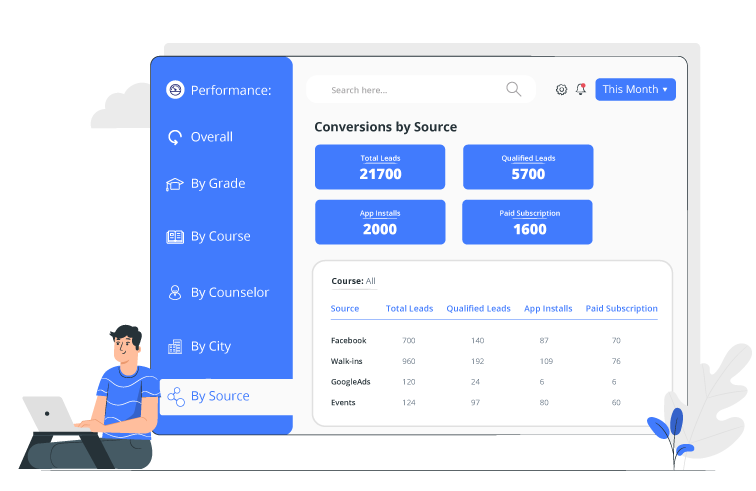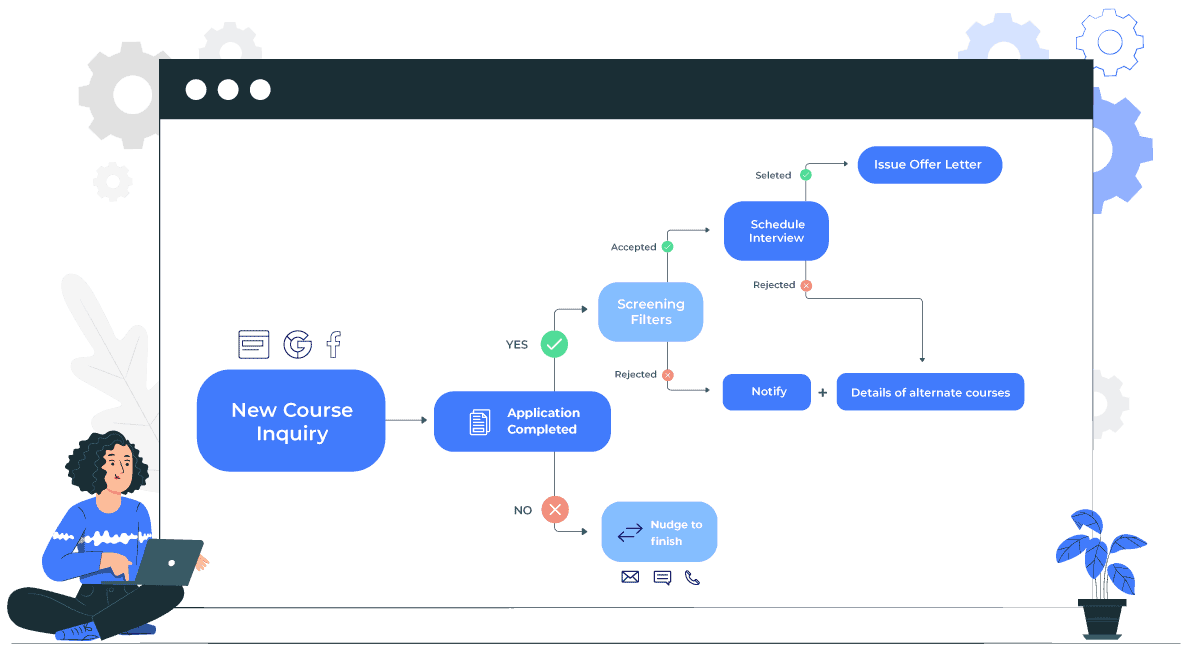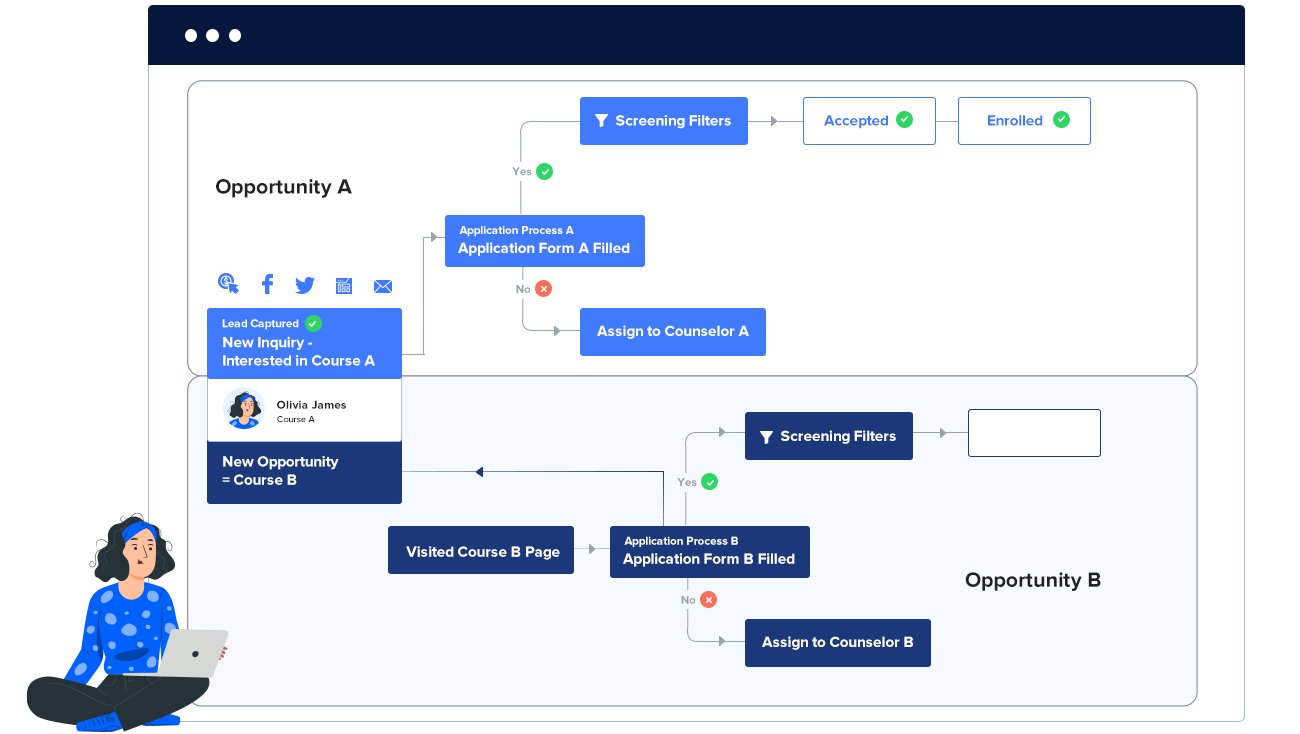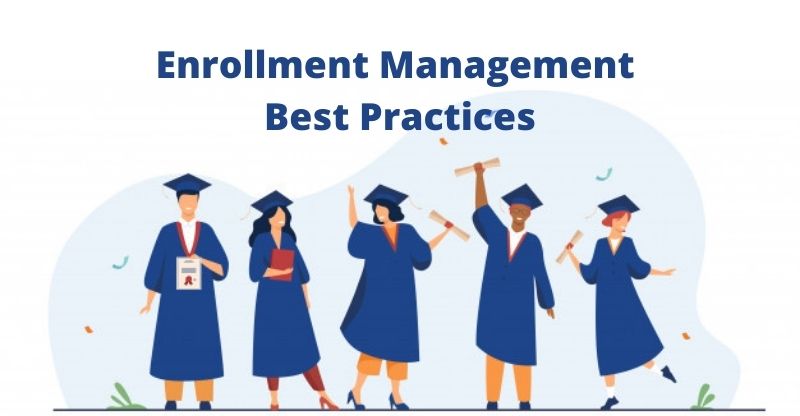The higher education terrain is ever-changing. Students and their needs are evolving as fast as we blink our eyes. There are now more learning options than before.
Admissions teams that are crushing their enrollment targets have one thing in common. They all have a holistic enrollment system tailored towards the modern-day student.
In this article, I will show you some best practices for enrollment management in higher education. You have a higher chance of trumping the competition by following these tips.
1. Focus on the right digital channels
You may have heard this a million times already that online channels can help boost engagement and student enrollment. And a lot of colleges and universities are into this. For instance, schools in the USA spend $1.65 billion on paid advertising (Source: Educational marketing group).
It also means that there is a lot of competition. So, you want to get the best out of your ad spend. Some channels are better for your marketing than others. One of them is Google Adwords.
With Adwords, you can market to an audience with a specific need, leveraging a wide range of keywords. Adwords generally have a higher potential for student conversion. At least when compared to other digital advertising channels. It lets you advertise on Google search engine, emails, YouTube, partner websites, and apps.
However, I will advise you to try and test different digital channels that work best for you. You can integrate your advertising platform with CRM and monitor the channels that bring more conversions.

2. Connect the dots with an enrollment CRM
In this fast-paced world, CRMs are non-negotiable and should be at the core of every marketing team. They offer several benefits apart from attracting, converting, and retaining students. The following are some of the ways a higher education CRM benefits your team.
End-to-end admissions management
Every eventual student goes through a lifecycle. During this process, they interact with you via different channels – from phone calls to emails, SMS, or your website. It is obvious to lose track of conversations like this. CRMs keep you in the loop of where these conversations are happening. And who on your team is handling them.
It also trickles down to after they have finally become a student. Information like admission details and academic documents are available in one place and readily accessible to any member of your team.
Capture student inquiries
One of the goals of any higher education marketing campaign is to generate more inquires. But it is now left to you to turn these inquiries into enrollments. One way to do this is to tighten the screws on your follow-up strategy.
CRMs can automate the follow-up messages and allow you to reach out to inquiries faster. For context, your salespeople are 60 times more likely to qualify a lead than those who waited longer. To distribute student-leads among your call-center teams, in-house admission teams, or financial aid teams, you can assign attributes to them. It can include location, time, webpage visited, application status, and more. You can even go further to follow-up in their native language by assigning leads to your sales team based on location.
A CRM also lets you capture student inquiries from all your digital channels and distribute them to your enrollment officers. In practice, it allows you to act faster than the competition.
Want to learn more? Watch the masterclass on lead generation in higher education by Anthony Espinoza and Jenn Lyles, two seasoned lead generation consultants in Career Education.
3. Smoothen cross-team communication
Enrollment management in higher education consists of many moving parts – from the admissions team to the communications department. For effective enrollment management, schools need to manage integrated efforts across the departments and collaborate to communicate information.
You can simplify these knowledge management efforts through a portal. While the portal will support internal and external collaboration and data sharing among departments, you can interact with students personally.
Enrollment management solutions must be able to integrate with business and analytics applications. The purpose is to create and deliver the right information to those who need it. And also in real-time.
4. Back yourself with data
Every forward-thinking higher-ed institution wants to understand the context behind available data. For instance, information like the number of visits, retention rates, and click-through rates are useful.
It is possible to make sense of this information with advanced reporting and analysis. Using data mining techniques to profile groups, institutions can target specific groups. You can also adopt this throughout the sales lifecycle and in the relevant campaigns.
Schools can target prospective students to track retention profiles and identify potential candidates. With data analysis, institutions can put in place clear performance objectives and strategies.
5. Try social media retargeting
Social media retargeting works by tracking users who show interest in your school. Your retargeting can also include those who withdrew before making a decision. Part of the work involves sending the prospects specific and relevant content.
For example, you can retarget prospects who vanished while searching for scholarships via advertisements for specific financial aids and scholarships.
6. Set up automated workflows
You can increase productivity by linking individual aspects of the enrollment process. An example of this is email messaging. Automating email campaigns removes the need for admissions officers to send emails. Also, research shows that instant response to inquiries increases the likelihood of those inquiries converting into students.
Set up automated workflows to create custom inquiry distribution and lead prioritization. As a result, your admissions officers get more work done in less time.
Another benefit of automating enrollment workflows is – it reduces the chances of missing out on any inquiries. Automation ensures that all the leads captured have received a response from your admission teams.

7. Segment inquiries based on interest in course, lead stage, and eligibility
You can segment your messaging based on user responses to emails or based on their activities on the website. It creates a timeline that shows how a student’s interest in enrolling in your college increases over time. You can also assign dedicated admission reps based on the type of student requests or lead stage.
You can even identify multiple campuses and courses your potential students might be interested in, manage these interests as different opportunities and engage them accordingly.

8. Develop a content strategy that works
You don’t want to spam prospects with emails about your school’s admission process. Instead, provide engaging content that they will still want to read. Whether you’re advising on writing college essays or acing college interviews, your content should be relevant to your prospect’s needs.
The content should also be easy to digest. For example, you can post infographics on your social media pages. You know, break down information into readable bits.
Your content strategy should also be a reflection of your demographics. You don’t want to create content for parents when your audience is teenagers. The goal is to build a charismatic online reputation that resonates with prospects.
Enrollment management in higher education can be a breeze
You might have invested in enterprise resource planning (ERP) for your university. But is it enough? Sure, ERP can help you manage your internal operations. But, you also want to incorporate a strategic approach to enrollment management. For this, Higher Education CRM becomes a must.
CRM software for enrollment management in higher education can create the intelligence needed for crucial tasks such as recruitment, admissions, retention, and alumni relations. Strategic enrollment management uses this information to strengthen relationships.
There seems to be a lot to change ahead of the next admission season. But taking a calculated step in the right direction is essential. You can take that first step with Leadsquared Higher Education CRM to accelerate your college enrollment.
Enrollment management in higher education FAQs
Strategic enrollment management corresponds to the efforts of higher education institutions to identify, recruit, enroll, and retain students towards graduation/course completion.
The admission management system (for example, Education CRM) empowers schools, colleges, and universities to manage online admissions effectively. It eliminates the paperwork and engages with students at every step of the admission process.
Apart from defining the value propositions of your college, you will also need to make efforts in marketing to create awareness about your courses and placement opportunities. For this, produce video content, engage with prospective students on social media, ensure your website is mobile-friendly, and provide paperless application portals to find student leads.
The rising enrollment management trends include conversation marketing (personalized communication), paperless applicant portals, reaching out to parents, teachers, career counselors, and finding the right-fit candidates for institutions.









